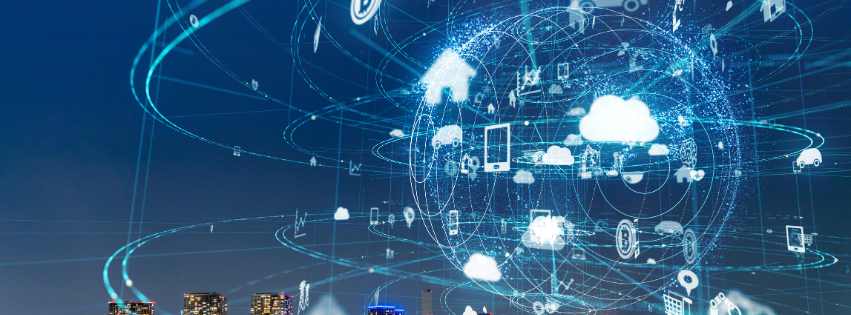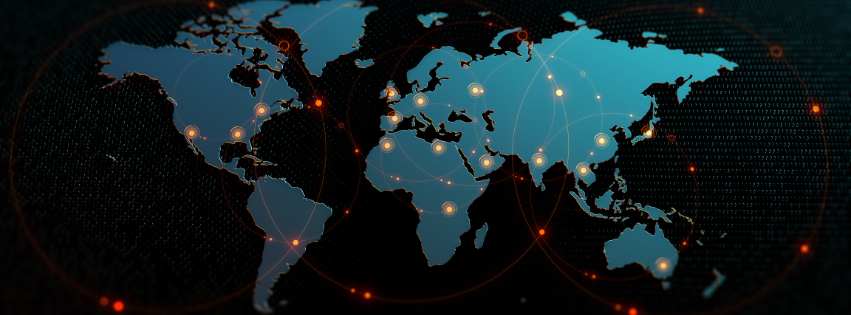In today’s digital era, technology plays a pivotal role in shaping migration patterns, experiences, and outcomes worldwide. From facilitating communication and access to information to transforming remittance flows and integration processes, technology has become an integral part of the migration landscape. Let’s delve into how technology affects migration and its broader implications across various domains.
Communication and Connectivity
Technology has significantly transformed how migrants communicate, providing them with unprecedented opportunities to stay connected with their communities across borders. With the widespread availability of mobile phones, migrants can easily maintain contact with family members, friends, and support networks, regardless of geographical distance. Social media platforms and messaging apps further facilitate communication, allowing migrants to share updates, photos, and videos in real-time.
This enhanced connectivity plays a crucial role in fostering a sense of belonging among migrants and reducing feelings of social isolation. Being able to stay in touch with loved ones and participate in social interactions virtually helps migrants maintain meaningful connections to their cultural heritage and identity. Moreover, technology enables migrants to access vital information and resources related to their migration journey, such as legal assistance, healthcare services, and community support networks.
As a result, technology not only improves migrants’ well-being but also enhances their integration into host societies. By staying connected with their communities and accessing relevant information, migrants can navigate the challenges of settling in a new country more effectively. This sense of belonging and support network provided by technology contributes to migrants’ overall sense of security and confidence in their ability to adapt to their new environment.
Furthermore, technology facilitates cross-cultural exchange and interaction, enabling migrants to engage with individuals from diverse backgrounds and perspectives. This exposure to different cultures and ideas fosters mutual understanding and empathy, contributing to greater social cohesion and integration within host communities.

Access to Information and Services
Digital innovations have revolutionized the way migrants access crucial information and services, empowering them to navigate their migration journeys with confidence and clarity. Through websites, mobile applications, and online platforms, migrants gain access to a wealth of resources covering various aspects of their migration experience.
One of the key benefits of these digital tools is the accessibility of information on legal rights. Migrants can learn about their rights and responsibilities in their destination country, understand immigration laws and procedures, and access legal assistance if needed. This knowledge equips migrants with the information they need to make informed decisions about their migration process, ensuring they are aware of their rights and can advocate for themselves effectively.
In addition to legal information, digital platforms provide migrants with valuable resources on healthcare. They can access information about healthcare services available in their destination country, including how to access medical care, find healthcare providers, and navigate the healthcare system. This empowers migrants to prioritize their health and well-being, seek medical assistance when needed, and make informed decisions about their healthcare options.
Furthermore, digital innovations offer resources on education and employment opportunities. Migrants can explore educational programs, language learning courses, and vocational training opportunities to enhance their skills and qualifications. They can also access job search platforms, employment resources, and career guidance services to explore employment options and pursue economic opportunities in their destination country.
Online platforms provide migrants with access to social support networks and community resources. They can connect with other migrants, join online communities, and access peer support groups to share experiences, seek advice, and build social connections. This sense of community and support helps migrants navigate the challenges of migration, reduce feelings of isolation, and foster a sense of belonging in their new environment.
Also Read: When did the Migration Crisis start?

Remittances and Financial Inclusion
Technology has revolutionized the way migrants send money back to their families and communities, transforming remittance flows into a more efficient and affordable process. With the emergence of digital payment platforms, mobile banking services, and cryptocurrency solutions, migrants now have access to a variety of secure and convenient channels for sending remittances across borders.
One of the key advantages of these digital payment solutions is their efficiency. Unlike traditional methods such as bank transfers or money transfer operators, digital platforms offer instant or near-instant transactions, allowing migrants to send money to their loved ones in a matter of seconds or minutes. This speed and convenience significantly reduce the time and effort required to send remittances, enabling migrants to support their families more quickly and reliably.
Moreover, digital payment platforms and mobile banking services offer greater affordability compared to traditional remittance channels. By eliminating the need for costly intermediary fees and transaction charges, migrants can send money at lower costs, maximizing the amount of funds that reach their recipients. This cost-effectiveness benefits both migrants and their families, allowing them to allocate more resources towards essential expenses such as food, housing, education, and healthcare.
By facilitating secure cross-border transactions, technology supports economic development and financial inclusion in migrant-sending countries. Remittances serve as a lifeline for many families and communities, providing essential income streams that contribute to poverty reduction, household welfare, and local economic development. Moreover, increased access to digital financial services empowers individuals and communities to participate more actively in formal financial systems, fostering economic growth and resilience.

Integration and Empowerment
Technology plays a pivotal role in facilitating the integration and empowerment of migrants in their host communities, offering them access to a wide range of resources and opportunities that contribute to their socio-economic inclusion. Digital innovations provide migrants with access to educational resources, job search platforms, and social support networks, empowering them to build new lives and contribute to their local economies.
One of the key ways technology supports migrant integration is through access to educational resources. Online learning platforms offer migrants opportunities to acquire new skills, pursue academic studies, and enhance their qualifications from anywhere with an internet connection. Whether learning a new language, obtaining vocational certifications, or completing academic degrees, migrants can access educational opportunities tailored to their needs and interests, facilitating their integration into the local workforce and community.
Additionally, technology provides migrants with access to job search platforms and employment resources, enabling them to explore employment opportunities and pursue economic independence in their host countries. Online job portals, career websites, and professional networking platforms connect migrants with potential employers, helping them navigate the job market and secure meaningful employment. Moreover, digital tools offer resources such as resume builders, interview preparation guides, and career counseling services, empowering migrants to showcase their skills and experiences effectively and compete in the labor market.
Furthermore, technology facilitates access to social support networks and community resources, fostering a sense of belonging and inclusion among migrants. Online forums, social media groups, and community websites provide platforms for migrants to connect with others facing similar challenges, share experiences, and access peer support. Additionally, digital initiatives offer resources such as cultural orientation programs, mentorship opportunities, and integration assistance services, helping migrants navigate the social and cultural nuances of their new environment and build social connections.
By providing access to educational resources, job search platforms, and social support networks, technology enhances the integration and empowerment of migrants in their host communities. Online learning platforms, vocational training programs, and digital literacy initiatives offer migrants opportunities to acquire new skills, enhance their employability, and participate in local economies, contributing to their overall well-being and socio-economic inclusion. As technology continues to advance, its potential to support migrant integration and empowerment remains significant, offering new avenues for education, employment, and community engagement in the digital age.
Also Read: Detention and Deportations

Environmental Impact
Migration, often driven by environmental factors such as climate change, has significant implications for both the environment and human populations. As people migrate in response to environmental degradation, natural disasters, or resource scarcity, it can lead to various environmental impacts that affect climate change, ecosystems, and urbanization patterns.
One of the primary environmental impacts of migration is changes in land use and resource consumption. When people migrate from rural to urban areas or from environmentally degraded regions to more hospitable ones, it can result in increased demand for land, water, and other natural resources. This heightened pressure on natural ecosystems can lead to deforestation, habitat loss, and biodiversity decline, exacerbating environmental degradation and threatening ecosystems’ health.
Moreover, migration can alter population distribution patterns, leading to changes in urbanization and infrastructure development. As migrants move to urban areas in search of economic opportunities and better living conditions, it can contribute to rapid urbanization and population growth. This urban expansion often leads to increased carbon emissions, air and water pollution, and waste generation, exacerbating environmental challenges such as air and water quality degradation, urban heat island effects, and habitat fragmentation.
Additionally, migration-induced urbanization can strain existing infrastructure and services, leading to increased demand for energy, transportation, housing, and water resources. The construction of new infrastructure, such as roads, buildings, and utilities, can further fragment natural habitats, disrupt ecosystems, and contribute to landscape fragmentation and loss of biodiversity.
Furthermore, migration patterns influenced by environmental factors can have implications for climate change adaptation and resilience. People migrating from areas prone to environmental hazards, such as coastal regions vulnerable to sea-level rise or agricultural areas affected by droughts or floods, may seek refuge in safer locations. However, this influx of migrants can strain local resources and infrastructure, exacerbating environmental vulnerabilities and challenging adaptation efforts.

Economic Implications
Migration has profound economic implications for both migrant-sending and receiving countries, impacting various aspects of their economies and shaping global market dynamics. While migrants contribute to economic growth through labor participation and remittance inflows, their presence can also strain resources and infrastructure in destination areas, leading to social and economic tensions.
One of the key economic benefits of migration is the contribution of migrants to labor markets in receiving countries. Migrants often fill essential roles in sectors experiencing labor shortages, including agriculture, construction, healthcare, and hospitality. Their participation in the labor force helps address skill gaps, boost productivity, and stimulate economic growth by fueling demand for goods and services. Additionally, migrants’ diverse skills and experiences contribute to innovation and entrepreneurship, driving economic dynamism and competitiveness in receiving countries.
Furthermore, remittances sent by migrants to their families and communities in their countries of origin play a vital role in supporting local economies and livelihoods. These financial transfers serve as a lifeline for many households, providing income streams that support consumption, investment, and poverty reduction. Remittances also contribute to financial inclusion and development by increasing access to financial services and stimulating local economies through increased spending and investment.
However, migration can also pose challenges for receiving countries, particularly in terms of resource allocation and social cohesion. The influx of migrants may strain public services such as healthcare, education, housing, and infrastructure, leading to increased demand and pressure on resources. This can result in social and economic tensions, as local communities may perceive migrants as competitors for jobs, housing, and social services, fueling resentment and xenophobia.
Moreover, migration can impact job markets, wages, and industry sectors in receiving countries. While migrants often fill low-skilled and low-wage jobs that native workers may be unwilling to perform, they may also compete with locals for employment opportunities, leading to wage stagnation or displacement in certain sectors. Additionally, migration can influence industry dynamics, affecting labor market trends, skill requirements, and occupational structures, shaping the overall composition and competitiveness of local economies.
Also read: Migrants and Human Trafficking

Societal and Globalization Effects
Migration plays a crucial role in shaping societies and driving globalization processes, contributing to cultural diversity, innovation, and social change worldwide. As people move across borders, they bring with them unique perspectives, traditions, and experiences, enriching the cultural fabric of their host communities and fostering intercultural exchange.
One of the key ways migration influences societies is through cultural diversity. Migrants introduce new languages, cuisines, customs, and traditions, creating vibrant multicultural communities that celebrate differences and promote tolerance and acceptance. This cultural exchange stimulates creativity and innovation, as diverse perspectives and ideas inspire new ways of thinking, problem-solving, and artistic expression.
Moreover, migration contributes to social change by challenging existing norms, values, and institutions, driving societal transformation and progress. Migrants often bring with them alternative perspectives on social issues such as gender equality, human rights, and environmental sustainability, sparking debates and discussions that lead to positive social change and advocacy efforts.
Technology plays a crucial role in facilitating cross-cultural communication and fostering global connectivity. Digital platforms, social media networks, and online communities provide opportunities for migrants to connect with their peers, share their experiences, and engage in dialogue with individuals from diverse backgrounds and cultures. This exchange of ideas and knowledge promotes intercultural understanding and collaboration, breaking down barriers and fostering a sense of global citizenship.
However, migration also presents challenges related to social cohesion, identity, and political polarization. In some cases, cultural differences and social tensions between migrant and host communities can lead to social fragmentation and conflict, undermining social cohesion and trust. Moreover, migrants may face discrimination, marginalization, and exclusion, hindering their integration and sense of belonging in their host societies.
Additionally, migration can contribute to political polarization and social division, as debates over immigration policies and multiculturalism often fuel divisive rhetoric and ideologies. This polarization highlights the importance of inclusive policies and social integration efforts that promote dialogue, mutual respect, and shared values among diverse communities.
In summary, technology plays a multifaceted role in migration, influencing communication, access to services, financial transactions, integration processes, and broader socio-economic and environmental dynamics. As technology continues to advance, policymakers, stakeholders, and communities must address the opportunities and challenges posed by migration in the digital age, promoting inclusive and sustainable migration outcomes for all.
